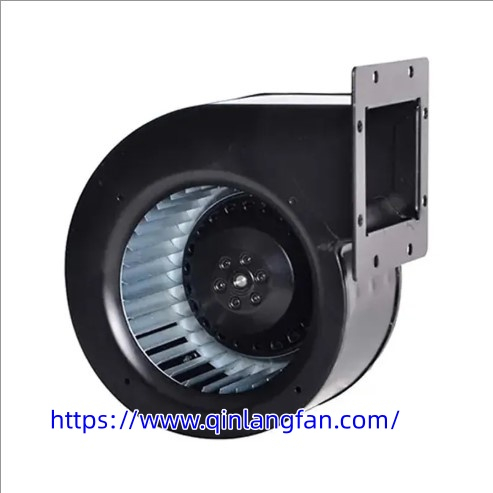Why Does Qinlang Multi Stage Centrifugal Fan Shape System Flow?

In the broad field of engineered ventilation, Qinlang introduces a Multi Stage Centrifugal Fan as a foundation for controlled airflow across complex environments where pressure regulation, thermal balance, and operational steadiness must stay aligned during extended cycles. This equipment functions as an anchor within systems that require stable delivery while facing spatial constraints, variable duct geometry, or shifting thermal conditions created by continuous process demands. Across numerous facilities, designers search for components that create uniform stream paths without introducing turbulence, and this model supports such objectives through carefully shaped internal contours that preserve motion across transitions. It enters service in places that depend on dependable power transfer between rotating elements and guided interior passages where friction, resistance, and redirection occur constantly.
The arrangement behind the stages allows transitions to feel natural as air progresses through the structure and adapts to redirected pathways without sharp interruptions. This layout encourages soft progression with limited vibration as moving energy encounters curved boundaries that shield the system from sudden contrast. During long sessions, this form reduces stress across the rotating core and supports predictable thermal patterns. Designers who prioritize airflow continuity also appreciate its ability to retain velocity without imposing harsh strain on the mechanical structure. This keeps the internal distribution balanced across wide operational envelopes often present in continuous-use environments.
Many facilities require long periods of uninterrupted circulation where the fan must hold its position without drifting away from the designed behavior. This model remains consistent because the internal guides work with the rotating parts to keep momentum focused where it needs to stay. Pressure movement inside the chamber follows programmed paths that allow each segment to reinforce the next. Such directional consistency avoids chaotic motion and sustains a calm environment inside the channel. While airflow variables shift during extended operation, the device maintains coherence in its motion, supporting applications where temperature stability is essential across multiple sectors of the workspace.
Across broader installations, airflow usually interacts with several structures that reshape direction or exchange heat. Because this fan balances distribution across the channel, the surrounding equipment receives stable input without abrupt fluctuations. Designers handling ventilation challenges prefer components that grant a smooth response to throttle shifts, and this device supports that practice. Its interior character grants a guided rhythm that holds alignment with transitional phases in broader systems. As operational patterns vary, the fan respects those shifts without departing from its anchored behavior. Energy passes through the stages steadily, keeping environments comfortable and secure across zones with different purposes.
One defining aspect of durable ventilation equipment lies in the ability to remain quiet during extended use. By keeping motion aligned with curved pathways, the fan forms airflow streams that interact softly with interior surfaces. This design avoids sudden pressure imbalance that triggers noise during rapid adjustments. Users working near sensitive areas gain advantages from this gentle distribution, allowing long cycles to continue without creating disruptive situations. As the components maintain synchronized rotation, the surrounding environment remains calm throughout routine phases even when airflow rates fluctuate.
Another important concern for many installations is thermal consistency. When air transfers through staged passages without harsh collisions, temperature gradients settle gently across the system. The fan's interior form minimizes disruptive pockets and directs flow across surfaces that moderate heat more evenly. This attribute becomes essential in spaces where delicate equipment depends on steady conditions. Balanced airflow keeps surrounding surfaces under control while supporting workloads across broad areas. As momentum carries through the stages, the overall output remains grounded, permitting the environment to stabilize and stay predictable throughout extended operation.
Because many ventilation systems must operate for long spans, maintenance simplicity becomes central to practical planning. The structure of this fan keeps wear limited because the transitions between segments are smooth, lowering the stress that typically accumulates across high-speed systems. When service teams inspect components after long intervals, they encounter predictable patterns that ease planning. The arrangement ensures that parts stay aligned across cycles, enabling the equipment to run freely without drifting into unstable zones. Across facilities that rely on consistent performance, this contributes to overall safety and reliability.
As airflow interacts with surrounding channels that exhibit varied geometry, the Multi Stage Centrifugal Fan supplied by Qinlang provides a foundation for controlled progress across every transitional area where directional change influences mechanical response. It remains steady across demanding cycles, supporting spaces that depend on calm airflow as daily operations continue. Its structure helps maintain harmony between speed, temperature, and pressure while lowering strain on surrounding equipment. To explore this model and related solutions, visit https://www.qinlangfan.com/product/centrifugal-fan/
- Art
- Causes
- Crafts
- Dance
- Drinks
- Film
- Fitness
- Food
- Jogos
- Gardening
- Health
- Início
- Literature
- Music
- Networking
- Outro
- Party
- Religion
- Shopping
- Sports
- Theater
- Wellness

